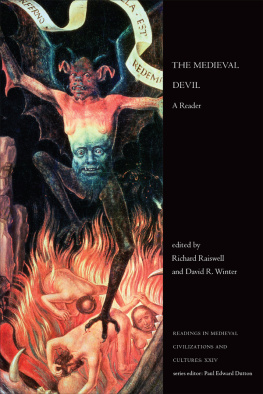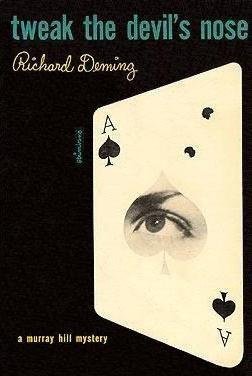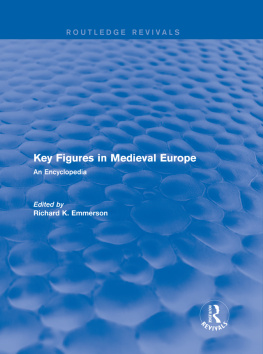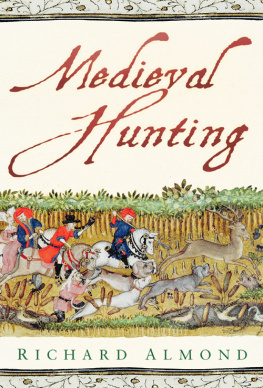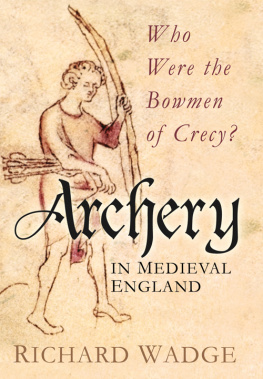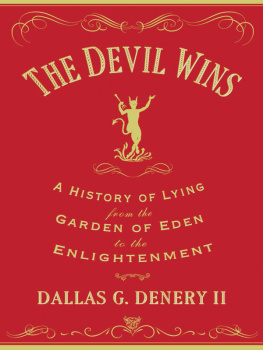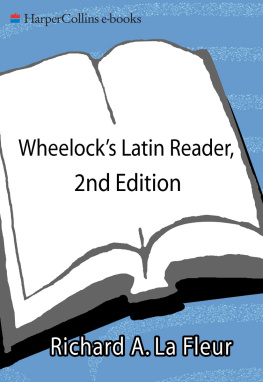Richard Raiswell - The Medieval Devil: A Reader
Here you can read online Richard Raiswell - The Medieval Devil: A Reader full text of the book (entire story) in english for free. Download pdf and epub, get meaning, cover and reviews about this ebook. year: 2022, publisher: University of Toronto Press, genre: Religion. Description of the work, (preface) as well as reviews are available. Best literature library LitArk.com created for fans of good reading and offers a wide selection of genres:
Romance novel
Science fiction
Adventure
Detective
Science
History
Home and family
Prose
Art
Politics
Computer
Non-fiction
Religion
Business
Children
Humor
Choose a favorite category and find really read worthwhile books. Enjoy immersion in the world of imagination, feel the emotions of the characters or learn something new for yourself, make an fascinating discovery.
- Book:The Medieval Devil: A Reader
- Author:
- Publisher:University of Toronto Press
- Genre:
- Year:2022
- Rating:3 / 5
- Favourites:Add to favourites
- Your mark:
- 60
- 1
- 2
- 3
- 4
- 5
The Medieval Devil: A Reader: summary, description and annotation
We offer to read an annotation, description, summary or preface (depends on what the author of the book "The Medieval Devil: A Reader" wrote himself). If you haven't found the necessary information about the book — write in the comments, we will try to find it.
The Medieval Devil: A Reader — read online for free the complete book (whole text) full work
Below is the text of the book, divided by pages. System saving the place of the last page read, allows you to conveniently read the book "The Medieval Devil: A Reader" online for free, without having to search again every time where you left off. Put a bookmark, and you can go to the page where you finished reading at any time.
Font size:
Interval:
Bookmark:

series editor: Paul Edward Dutton
A READER
edited by
RICHARD RAISWELL AND DAVID R. WINTER
UNIVERSITY OF TORONTO PRESS
Toronto Buffalo London
University of Toronto Press 2022
Toronto Buffalo London
utorontopress.com
Printed in the U.S.A.
ISBN 978-1-4426-3417-6 (cloth) ISBN 978-1-4426-3418-3 (EPUB)
ISBN 978-1-4426-3416-9 (paper) ISBN 978-1-4426-3419-0 (PDF)
All rights reserved. The use of any part of this publication reproduced, transmitted in any form or by any means, electronic, mechanical, photocopying, recording, or otherwise, or stored in a retrieval system, without prior written consent of the publisheror in the case of photocopying, a license from Access Copyright, the Canadian Copyright Licensing Agencyis an infringement of the copyright law.
LIBRARY AND ARCHIVES CANADA CATALOGUING IN PUBLICATION
Title: The medieval devil : a reader / edited by Richard Raiswell and David R. Winter.
Names: Raiswell, Richard, 1966, editor. | Winter, David R., editor.
Series: Readings in medieval civilizations and cultures ; 24.
Description: Series statement: Readings in medieval civilizations and cultures ; XXIV | Includes bibliographical references and index.
Identifiers: Canadiana (print) 20220143293 | Canadiana (ebook) 20220143358 | ISBN 9781442634176 (cloth) | ISBN 9781442634169 (paper) | ISBN 9781442634183 (EPUB) | ISBN 9781442634190 (PDF)
Subjects: LCSH: DevilHistory of doctrinesMiddle Ages, 6001500Sources. | LCSH: DevilSocial aspectsEuropeHistoryTo 1500Sources. | LCSH: DemonologyHistory of doctrinesMiddle Ages, 6001500Sources. | LCSH: EuropeChurch history6001500Sources.
Classification: LCC BF1521 .M43 2022 | DDC 235/.40902dc23
We welcome comments and suggestions regarding any aspect of our publications please feel free to contact us at .
Every effort has been made to contact copyright holders; in the event of an error or omission, please notify the publisher.
We wish to acknowledge the land on which the University of Toronto Press operates. This land is the traditional territory of the Wendat, the Anishnaabeg, the Haudenosaunee, the Mtis, and the Mississaugas of the Credit First Nation.
University of Toronto Press acknowledges the financial support of the Government of Canada and the Ontario Arts Council, an agency of the Government of Ontario, for its publishing activities.

This project has been far too long in the works. As it has evolved, we have incurred debts of gratitude to a number of people and institutions. In particular, we would like to thank Dr. Robert Buranello for his help with thirteenth-century Veronese. Dr. Michelle Brock has test-driven some of these selections in her History of the Devil course over the years, as has Gary Waite in his Witchcraft and the Devil. Megan Lane MacDonald, Luke Baird, and Maggie MacEwen, along with students in Raiswells Science, Magic, Witchcraft, and the Occult and Winters History of the Devil courses, have been subjected to iterations of many of these sources and have offered helpful comments.
As always, the staff and resources of the Centre for Reformation and Renaissance Studies at Victoria University in the University of Toronto have been exceptionally helpful. Richard would like to thank in particular Natalie Oeltjen, Matt Kavaler, and Konrad Eisenbichler for their continuing support. The staff at the Robertson Library at the University of Prince Edward Island have been invaluable. Christine MacLauchlan has been tireless in tracking down copies of more obscure sources from across the globe. We would also like to thank the staff in the Arts Office at Brandon University for their assistance. Over the life of the project, this has included Janice Mahoney, Shari Maguire, and Sally Mott.
This project would have been impossible without the constant support of our partners, Elizabeth Schoales and Allison McCulloch. David would also like to thank his son, Xavier; Richard would like to thank also B. W. Bipps.
Finally, wed like to thank the dapper gentleman we met at noon one day at the intersection of Yonge and Bloor streets who suggested this project to us.
The last forty years have seen a burgeoning interest in the historical study of witchcraft among scholars and students alike. Courses examining the history of witchcraft are now a common and popular feature of history curricula across Europe and North America, supported by a growing number of primary-source anthologies. Indeed, Martha Rampton has recently published a very fine collection entitled European Magic and Witchcraft as part of the Readings in Medieval Civilizations and Cultures series. But while scholars have rightly pointed to how shifting attitudes toward elite and popular magic in the context of an increasingly centralized Church fed into what would become the witch panics of the early modern world, the subject of the devil has largely been treated as ancillary. Yet from his first appearances in scripture preventing Balaam from disobeying Gods will to his role presiding over the cannibalistic orgies described by confessed participants in the middle of the fifteenth century, Satan has played a dynamic role in society, critiquing and policing its boundaries, fostering social cohesion as communities closed ranks against what they perceived to be demonic incursions.
The Medieval Devil, then, challenges students to take a new look at the development of medieval society by analyzing how the men and women of the period constructed its antithesis. By looking at how particular groups thought about the devil, discerned his presence, detected his machinations as underlying contemporary events, and sought to counter his actions over the span of the period, readers will be afforded a new point of entry into European history.
The medieval devil is a decidedly slippery character. Over this formative period, he is made and remade in response to new social and political pressures and shifting cultural priorities, occupying different explanatory niches according to the various communities detecting the stench of his presence. As students working through The Medieval Devil will quickly discover, there was no single medieval devil or any inevitable trajectory of devil belief. Rather, his identity and potency at any particular historical instance were as much a function of the projection of communal tensions and anxieties as it was of the musings of theologians and canonists.
In part, this flexibility stems from the fact that the biblical source texts upon which intellectuals relied to discern his nature and relationship to creation are imprecise, inconsistent, and even contradictory. Thus, from the earliest periods, those seeking to understand not just the existence but also the place and function of malevolence in the worlda world that the Bible described as created perfectly goodsupplemented biblical assertions with ancillary texts in any attempt to forge a coherent figure with a defined role in sacred history.
But with churchmen principally concerned with divine matters, the medieval devil was often a creature better known through the observable evidence of his action in the world. As Christ said during the Sermon on the Mount, By their fruits you shall know them (Matt. 7.16). Thus the devil was often found underlying the lived experience of personal or communal misfortune and suffering, or detected in social difference, disorder, or deviance. He was never particularly well tethered to any formal theological position, and it was often this apparent
Font size:
Interval:
Bookmark:
Similar books «The Medieval Devil: A Reader»
Look at similar books to The Medieval Devil: A Reader. We have selected literature similar in name and meaning in the hope of providing readers with more options to find new, interesting, not yet read works.
Discussion, reviews of the book The Medieval Devil: A Reader and just readers' own opinions. Leave your comments, write what you think about the work, its meaning or the main characters. Specify what exactly you liked and what you didn't like, and why you think so.

